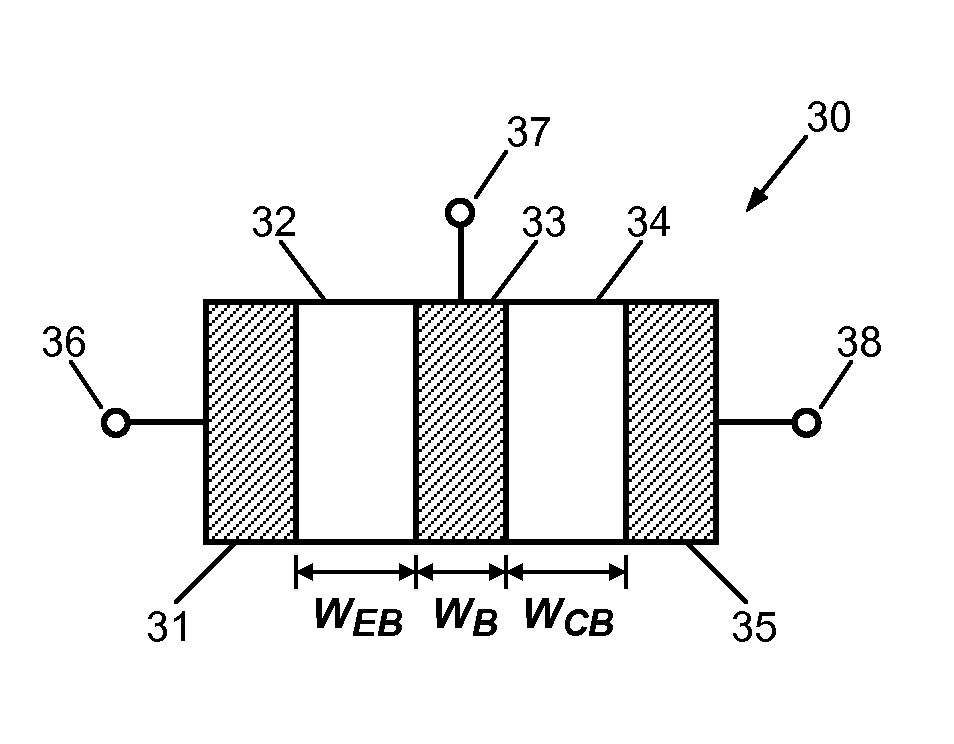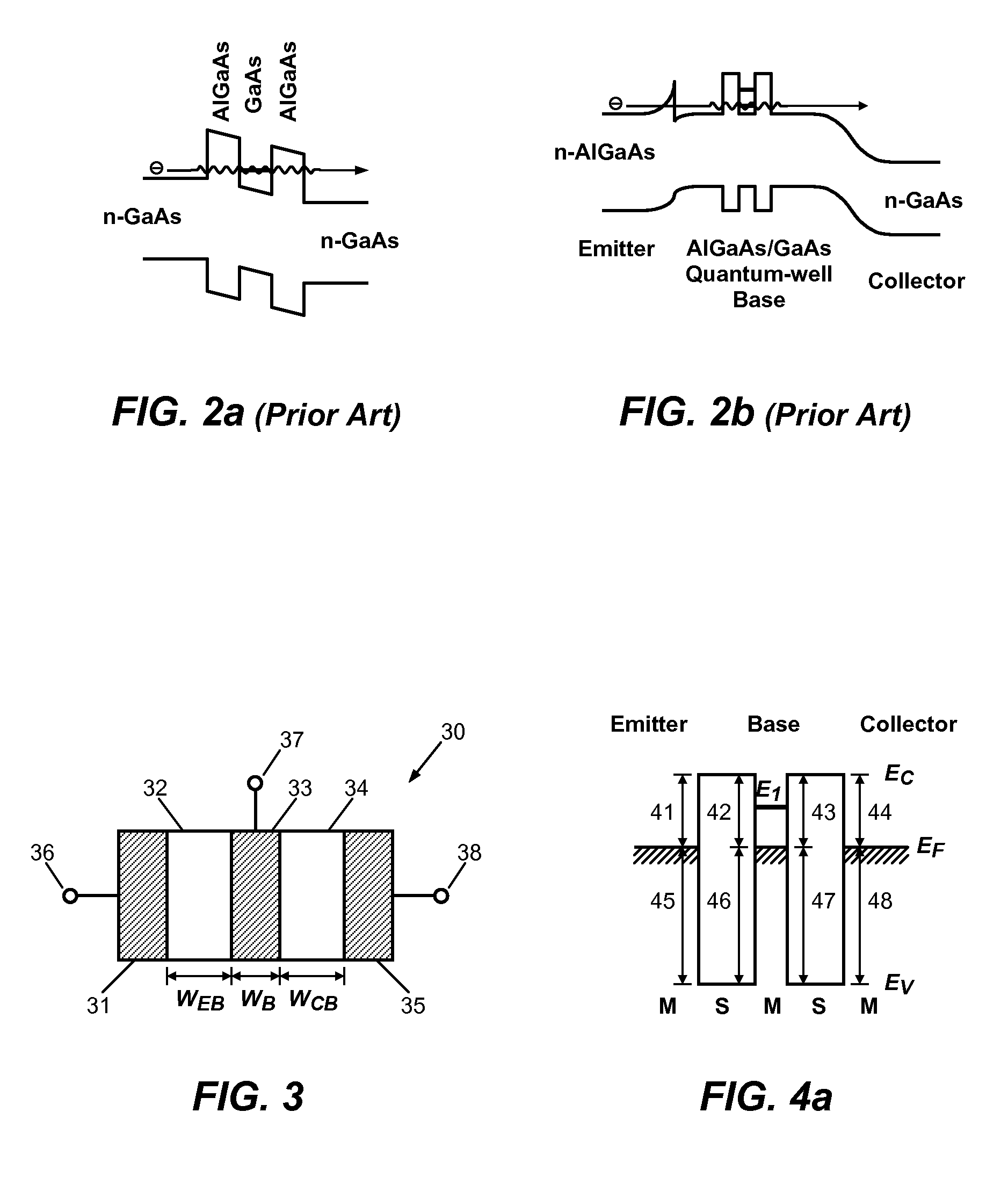Schottky barrier quantum well resonant tunneling transistor
a quantum well resonant tunneling and barrier technology, applied in the field of semiconductor devices, can solve the problems of increasing power consumption, mosfet will encounter critical technological barriers and fundamental physical limitations to size reduction, and the aggressive scaling of mos devices presents considerable challenges to the semiconductor industry, and achieves low parasitic resistance, small base width, and high speed.
- Summary
- Abstract
- Description
- Claims
- Application Information
AI Technical Summary
Benefits of technology
Problems solved by technology
Method used
Image
Examples
Embodiment Construction
Ge=10, 14, and 18 ML at VB=0 V.
[0072]FIG. 14a shows hole and electron tunneling currents, Jtp and Jtn, in a p-type SBQWRTT as functions of VB for WSi,2=6, 9, and 12 ML.
[0073]FIG. 14b shows hole transmission coefficient versus energy in a p-type SBQWRTT for WSi,2=6, 9, and 12 ML.
[0074]FIG. 15a shows electron tunneling current Jtn in an n-type SBQWRTT and hole tunneling current Jtp of a p-type SBQWRTT as functions of VB for two different VC.
[0075]FIG. 15b shows Jt-VC characteristics in n-type and p-type SBQWRTTs.
[0076]FIG. 15c shows transfer curve and circuit diagram of a SBQWRTT inverter.
[0077]FIG. 16 is a top view layout of an inverter circuit consisting of one n-type SBQWRTT and one p-type SBQWRTT.
[0078]FIG. 17a is a cross-sectional view illustrating the layer structure of the SBQWRTT inverter in FIG. 16 after epitaxial growth and oxide deposition.
[0079]FIG. 17b is a cross-sectional view of the SBQWRTT inverter along the B-B′ line in FIG. 16.
[0080]FIG. 17c is a cross-sectional view...
PUM
 Login to View More
Login to View More Abstract
Description
Claims
Application Information
 Login to View More
Login to View More - R&D
- Intellectual Property
- Life Sciences
- Materials
- Tech Scout
- Unparalleled Data Quality
- Higher Quality Content
- 60% Fewer Hallucinations
Browse by: Latest US Patents, China's latest patents, Technical Efficacy Thesaurus, Application Domain, Technology Topic, Popular Technical Reports.
© 2025 PatSnap. All rights reserved.Legal|Privacy policy|Modern Slavery Act Transparency Statement|Sitemap|About US| Contact US: help@patsnap.com



